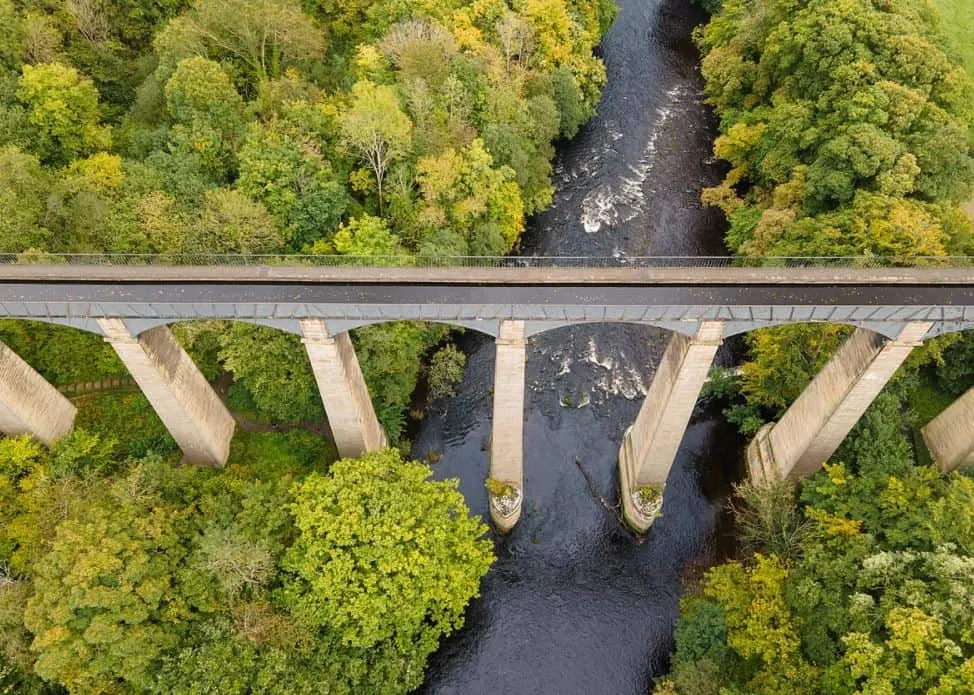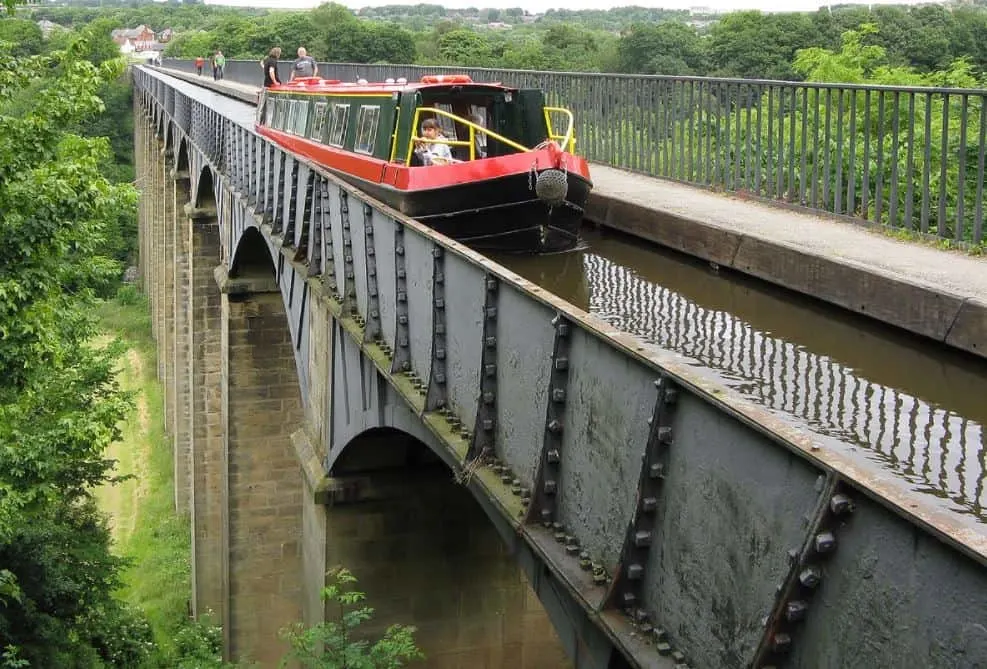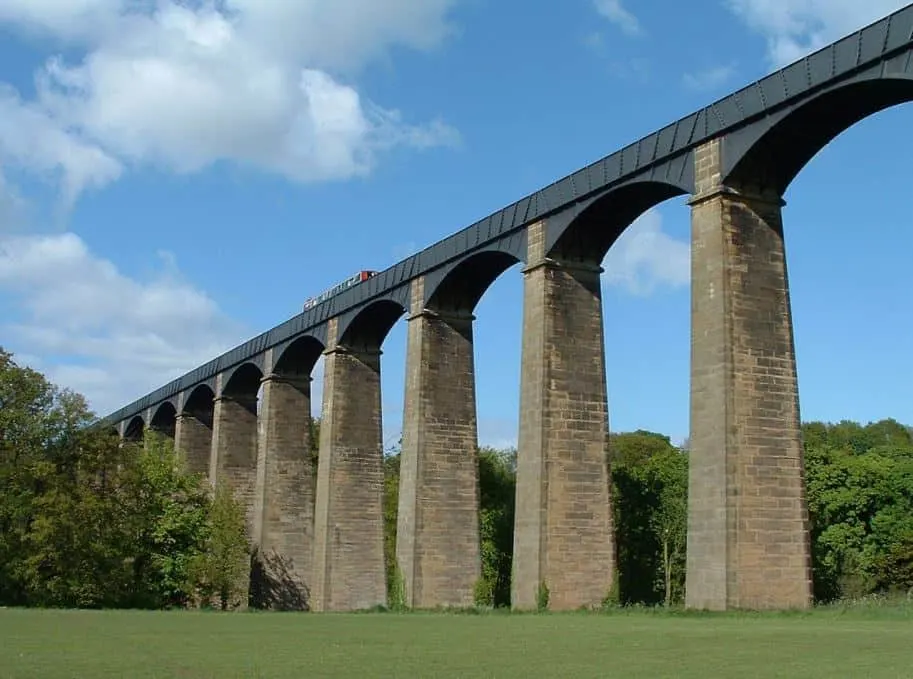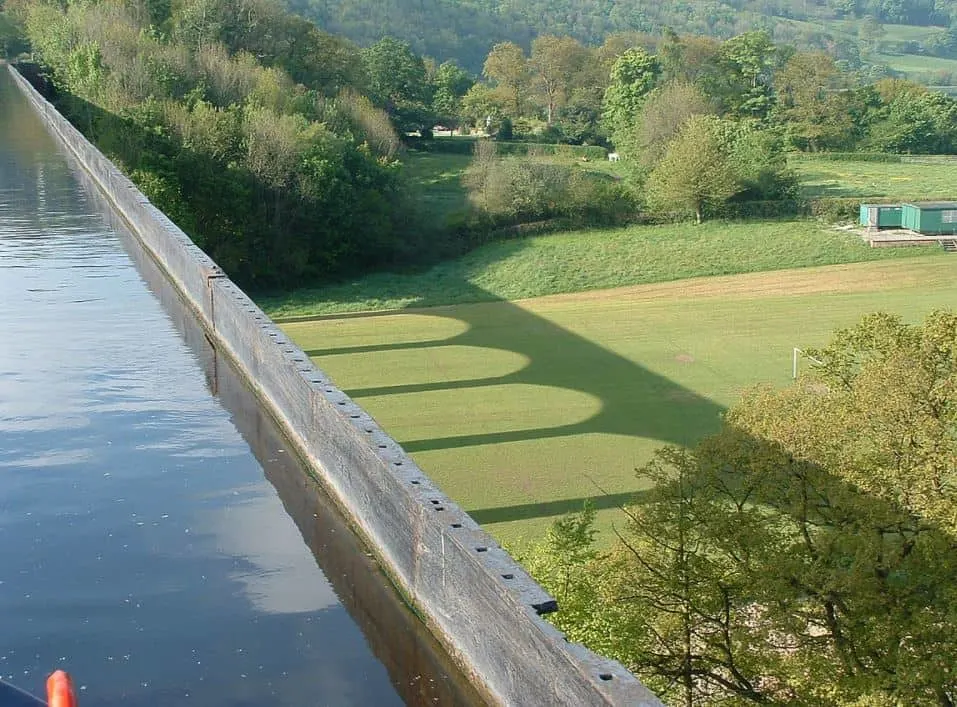It’s hard to imagine that a construction project started in the year 1795 still serves a purpose as a popular tourist attraction in the 21st century, but that’s exactly the case with this incredible structure.
In this article, we’ll take a closer look at some of the most interesting facts about the Pontcysyllte Aqueduct, one of the most amazing buildings in Wales.
1. It’s part of a canal that crosses the border between Wales and England
The Pontcysyllte Aqueduct is an incredible piece of engineering located in the northeastern part of Wales. It’s part of the Llangollen Canal which crosses the River Dee.
The aqueduct is located near the village of Froncysyllte which is situated in the Wrexham County Borough in the utmost northeastern corner of the country.
The River Dee is situated near the border of England and Wales and parts of it actually form the border between the two countries. The aqueduct is just a few kilometers away from the border as well.

2. This amazing structure was completed in the year 1805
What’s so fascinating about this particular aqueduct is that construction started all the way back in 1795 as part of a much larger project.
The aqueduct was built near the “Pont Cysyllte,” a 17th-century road bridge that is situated less than 200 meters (656 feet) east of where the aqueduct was eventually built.
The ain The main civil engineer of the project would eventually become one of the most renowned British engineers of the 19th century, Scotsman Thomas Telford (1757-1834).
Even though Telford was assisted by the much more experienced English engineer William Jessop (1745-1814), he is considered to be the leading engineer of the project, as seen on a plaque nearby commemorating its construction.

The amazing aqueduct eventually opened for boat traffic on November 26, 1805, just over 10 years after construction had started.

3. It features some impressive stats for a 2-century-old structure
Granted, the Romans were able to build even more impressive aqueducts that could supply entire cities with water. One of the most fascinating examples of their engineering capabilities can be found in Southern France and is called the “Pont du Gard.”
This doesn’t mean that the aqueduct in northeastern Wales is less impressive, on the contrary, it features some amazing stats:
- Length: 307 meters (1,007 feet)
- Width: 3.7 meters (12 feet)
- Height: 38 meters (126 feet)
- Water depth: 1.6 meters (5 feet 3 inches)
The bridge also consists of 18 arches and 4 piers standing in the water of the river below. It’s much longer than it initially appears to be as well.
It’s not only the longest aqueduct in Great Britain but also the highest navigable canal in the world, quite an impressive record for a structure completed well over 2 centuries ago.

4. The aqueduct never really got to serve its intended purpose
The larger project of which the aqueduct was an integral part was known as the Ellesmere Canal over the River Dee. This canal was supposed to connect the rivers, Mersey and Severn, in England and Wales.
This would have connected the Port of Liverpool to the north with the expanding mineral industry in the northeast of Wales. Because of a lack of funding, the entire project was never fully realized.
What’s even more remarkable is that the Pontcysyllte Aqueduct actually was the first and final project of this ambitious plan. The Trevor Basin just north of the structure ended up becoming the northern endpoint of the canal, not even close to the Port in Liverpool.
Multiple canals and aqueducts built in the area eventually assured that the aqueduct served a purpose for the local industry.
5. The aqueduct is still used as a popular tourist attraction today
Even though the aqueduct was extensively used initially by the local industry, this gradually declined as railways were being constructed to replace the canals.
Halfway through the 19th century, there were even plans to convert the canals into railways, but this plan ended up being shelved. Otherwise, we might have been looking at a railway instead of a navigable canal today.
By the 1930s, the traffic on the canal had declined so much that the aqueduct ended up being officially closed for commercial traffic in 1944.
This means that the purpose of the aqueduct changed completely in the second half of the 20th century because leisure boats started crossing the canal more frequently.
This was the start of the era in which this amazing aqueduct became a popular tourist attraction, a purpose it still serves today!

More interesting facts about the Pontcysyllte Aqueduct
6. The name of the aqueduct refers to the name of the town it’s located in. “Pontcysyllte” is a Welsh word that translates to “Cysyllte Bridge” or “Bridge of Cysyllte,” referring to the old township part of the village of Llangollen.
7. To strengthen the structure and protect it from the cold weather conditions during the winter, the mortar used to build the bridge was strengthened with a particular animal product.
The mortar that holds together the huge blocks of sandstone was produced with a combination of lime, water, and oxblood. This was a combination already used during antiquity and an inexpensive method to strengthen the structure.

8. The building materials of the aqueduct are a combination of stone and cast iron. The sandstone was quarried in a village nearby called Cefn Mawr.
This quarry featured sandstone high in quartz and was locally known as “The Rock.” These stones were discovered on the location where the local football team, the “Cefn Druids,” built their football stadium, also known as “Rock Stadium.”
9. Apart from nearly being converted into a railway track in the 19th century, the canal inside the aqueduct was saved once again during the 20th century.
Even though it was closed for commercial traffic, it still served 2 important purposes. One was to feed another canal in the area known as the Shropshire Union Canal. It also supplies drinking water to a reservoir near the village of Hursleston.
The future of the canal was completely secure when the Mid & South East Cheshire Water Board took on the management of the aqueduct in 1955.

10. Even though the aqueduct never became a key part of an incredible waterway going all the way up to the Port of Liverpool, it ended up being a very expensive project in the early 19th century.
About £47,000 was spent during the 10-year construction period, the equivalent of nearly £3.9 million today! The next phase of the project would have included a connection of Moss Valey, Wrexham, but this was never completed.
11. The top of the aqueduct features cast plates that form the bed of the canal. During construction, it was filled with water for a period of 6 months to check if it was watertight.
Today, the water in this through is released into the River Dee below once every 5 years to undergo a thorough inspection.
12. The entire canal has a length of 18 kilometers (11.18) miles and was completely inscribed as a UNESCO World Heritage site in 2009.
Because of the “difficult geographical setting” it’s considered to be an important feat of “civil engineering of the Industrial Revolution,” as well as a “masterpiece of creative genius!”

